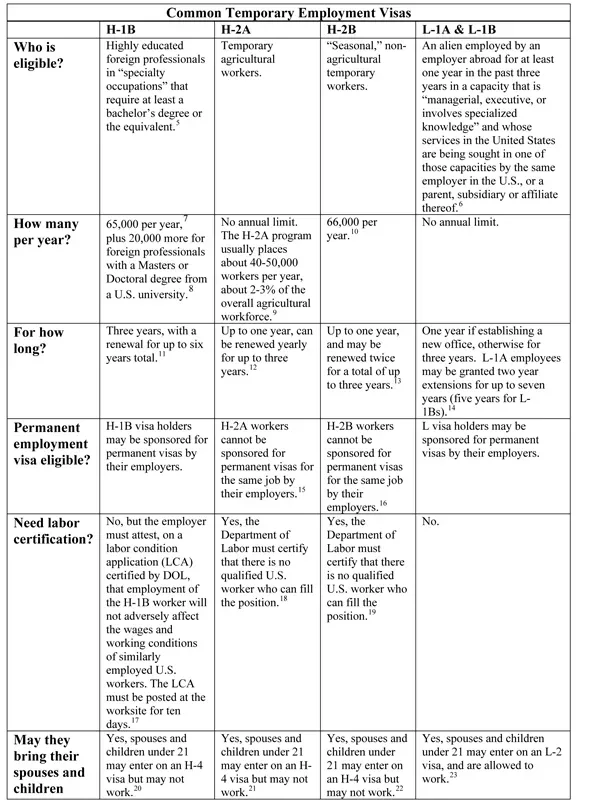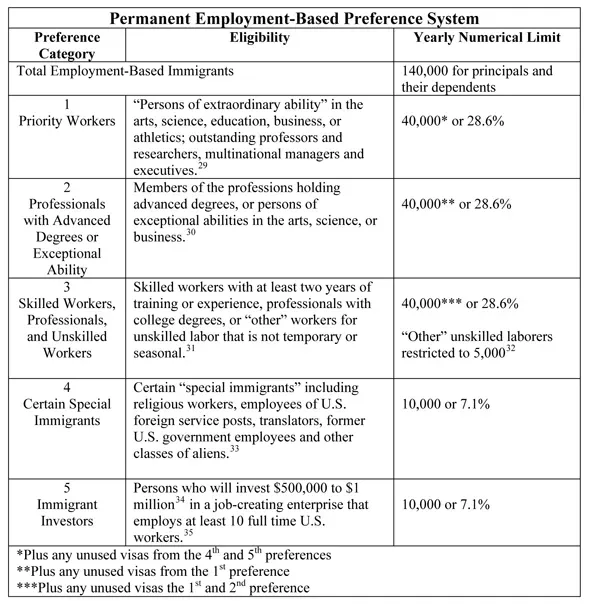Employment Based Immigration Attorney In Kansas City
Overview of Employment Based Visas
There are various categories (called classifications) of nonimmigrant visas for a person who wishes to work temporarily in the United States, based on U.S immigration laws. If you want to work in the U.S. temporarily, under immigration law, you need a specific visa based on the purpose of your travel and type of work you will be doing. The main agency that processes these visa applications is the United States Citizenship and Immigration Service (USCIS).
Contact Jeffrey Y. Bennett Law to schedule a consultation with a lawyer today. 816-656-3282
The following is a brief overview of each category of employment based visas. In many cases, there are annual numerical limits (with exceptions) on some visa types.*
- H-1B Persons in Specialty Occupations: requires the theoretical and practical application of a body of highly specialized knowledge requiring completion of a specific course of higher education. (65,000). This category also includes fashion models and Government-to-Government research and development, or co-production projects administered by the Department of Defense;
- H-1C Registered Nurses: H-1C classification applies to foreign nurses coming to perform nursing services in medically underserved areas for a temporary period up to three years.
- H-2A Seasonal Agricultural Workers: This visa is for temporary or seasonal agricultural workers if you are a citizen or national of a designated country. If you are a citizen or national from a non-designated country, USCIS may approve a petition on your behalf if it is determined to be in the United States’ interest
- H-2B Temporary or Seasonal Nonagricultural Workers: applies to temporary or seasonal nonagricultural workers. This classification requires a temporary labor certification issued by the Secretary of Labor (66,000)
- H-3 Trainees (other than medical or academic): applies to trainees other than medical or academic. This classification also applies to practical training in the education of handicapped children
- L Intracompany Transferees: who, within the three preceding years, have been employed abroad continuously for one year, and who will be employed by a branch, parent, affiliate, or subsidiary of that same employer in the U.S. in a managerial, executive, or specialized knowledge capacity
- O-1 Individuals with Extraordinary Ability or Achievement: in the sciences, arts, education, business, or athletics, or extraordinary achievements in the motion picture and television field
- O-2 Persons Accompanying an O-1: to assist in an artistic or athletic performance for a specific event or performance
- P-1 Individual or Team Athletes, or Members of an Entertainment: groups that are internationally recognized (25,000)
- P-2 Artists or Entertainers: who will perform under a reciprocal exchange program
- P-3 Artists or Entertainers: who perform under a program that is culturally unique
- R-1 Religious Workers: for persons working for religious institutions
- Q-1 Participants in an International Cultural Exchange Program; for the purpose of providing practical training, employment, and the sharing of the history, culture, and traditions of the alien’s home country.
* This information was adapted from information on the Department of State website http://travel.state.gov/visa/temp/types/types_1271.html.
U.S. law provides employers with several limited ways to bring foreign workers into the U.S. on a temporary or permanent basis. Employment-based immigration visa categories generally have limited and static numerical caps. In addition, before petitioning for a foreign worker, an employer is often required to obtain certification from the Department of Labor (DOL) that there are no U.S. workers available, willing, and qualified to fill the position at a wage that is equal to or greater than the prevailing wage generally paid for that occupation in the geographic area where the position is located. The purpose of this restriction is to demonstrate that the admission and hiring of foreign workers will not adversely affect the job opportunities, wages, and working conditions of U.S. workers.
Temporary Employment Visas
Temporary employment visas allow employers to hire foreign nationals to work in a specific job for a limited time period. Depending on the visa classification and, in some cases, the nationality of the intended employee, the employer may be required to file, as a first step, a petition for a nonimmigrant worker with U.S. Citizenship and Immigration Services (USCIS). If approved, a State Department consular officer then determines the foreign worker’s eligibility for a nonimmigrant visa. Once the visa has been issued, the worker may travel to the United States to assume employment with the petitioning employer. Upon arrival in the U.S., a Customs and Border Protection (CBP) officer will inspect the worker to confirm eligibility for admission and to determine the specific length of stay. Upon expiration of the period of stay (assuming it has not been extended by USCIS), the worker must depart the United States.

Permanent Employment Visas
A permanent employment visa (commonly referred to as a “green card”) allows a foreign national to work and live lawfully and permanently in the United States. Lawful permanent residents are subject to fewer restrictions than temporary workers (nonimmigrants), and generally may apply for U.S. citizenship after five years. In most cases, the individual’s employer must file a petition with USCIS. If the individual is already in the U.S. on a temporary visa, he or she may apply for “adjustment of status” to permanent residence after USCIS approves the employer’s petition. If the individual is outside the U.S., or is in the U.S. but chooses to have the immigrant visa application processed abroad, then the immigrant visa is processed by a U.S. consular officer.
Because of numerical and per-country limits (detailed below), some individuals must wait a significant period of time to apply for adjustment of status or an immigrant visa even after the petition is approved by USCIS. The Department of State issues a monthly visa bulletin, summarizing the availability of visa numbers for each preference category on a per-country basis. While some visas are “current,” allowing the individual to immediately apply for permanent residence, other categories are considerably backlogged, requiring the applicant to wait years.
The overall numerical limit for permanent employment-based immigrants is 140,000 per year. This number includes the immigrants plus their eligible spouses and minor children, meaning the actual number of employment-based immigrants is less than 140,000 each year. In addition, each country is limited to 7 percent of the worldwide level of U.S. immigrant admissions, otherwise known as per-country limits. The 140,000 visas are split between five preferences, detailed below:
The Backlog
The date that determines when an individual is eligible to apply for permanent residence is known as the “priority date.” This is the date the application for labor certification is filed with DOL, or if a labor certification is not required, the date the petition for the immigrant worker is filed with USCIS. Because of the numerical and per-country limits placed on permanent employment-based visas, the backlog in filing for permanent residence can be extensive.
As of April 2011, the first, fourth, and fifth preference categories had priority dates which were current for all nations. For unskilled workers in the third preference, where only 5,000 visas are available each year, demand far exceeds the supply of visas. Consequently, at the time of publication of this fact sheet, USCIS began processing visas for unskilled workers (from most countries) whose application priority date was July 2003. In other cases, backlogs occur when the demand for workers from specific countries outpaces the overall per-country limit. For instance, at the time of publication of this fact sheet, USCIS was only considering visa applications of Chinese and Indian workers in the second employment preference whose applications were filed on or before July and May 2006, respectively.
How Much Do These Visas Cost?
Employers must pay a $325 filing fee for the temporary work visas listed above (H-1B, H-2A, H-2B), as well as a training fee of $750-$1,500 depending on the size of the employer, and an additional anti-fraud fee of $500. Employers who have more than 50 employees, more than half of whom are H-1B or L visa holders, must pay an additional $2,000 fraud fee for H-1B applicants and $2,250 for L visa applicants.
Application fees for permanent employment-based visas cost $580 for the initial labor certification, plus an additional $720-$985 to obtain the actual permanent resident visa (“green card”) either through consular processing or adjustment of status in the U.S.

For an in-depth consultation on employment visas please contact Jeffrey Y. Bennett Law at 816-759-2776 (English) or 816-759-2777 (Espanol). Chinese, Korean, Japanese, and Vietnamese language consultations available upon reques
*Courtesy of IPC

